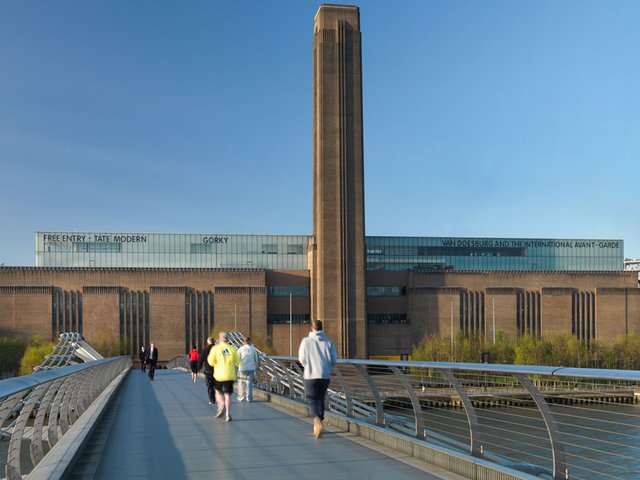Although no stranger to hands-on curating, Iwona Blazwick has always been at the conceptual helm of her previous projects. Starting at the Institute of Contemporary Arts in London (ICA), she had a brief spell at the Air Gallery, before returning to the ICA as head of exhibitions from 1987 to 1993. Since then she has been commissioning editor for Phaidon’s contemporary art books division and both co-curator and advisor to many UK and international shows before joining the Tate in 1997.
Ms Blazwick will succeed Catherine Lampert as director of East London’s top art institution, the Whitechapel Gallery, in June of this year. Her ability to think past obstacles such as the gallery’s lack of money and space (compared to her current domain, the Tate Modern), as well as her good reputation among curators with whom she has worked, should make, rather than break, her leap into museum directorship.
Louisa Buck: You’re effectively giving up being second-in-command at Tate Modern, which is quite something to relinquish.
Iwona Blazwick: Yes, it is. My four years at Tate Modern have been the most exciting in my professional life. But the Whitechapel post is really an opportunity to take up a directorship, and that’s something that I’ve never done. I knew that the post wouldn’t come up again for another five, even ten years, so it’s been a very, very difficult decision. But it’s really the opportunity to take on the running of a whole institution and obviously the lead times are a bit shorter and there’s probably more flexibility to be more reactive.
LB: And not to be a cog in a bigger machine?
IB: Well, that’s true of all large scale institutions—that you play a part in a much much bigger team. It’s also being able to take on this new kind of responsibility and be able to oversee the whole thing, whereas here [Tate Modern] we’ve got our individual sections.
LB: But is it not also going to be frustratingly difficult to have a creative role when you are the figurehead of an institution, albeit a smaller one?
IB: The way that I have discussed the post with the Board is that I’m very much the artistic director. They have a fantastic administrator and a very strong team at the Whitechapel and I have accepted it on the basis that my role is really to have a hands-on relationship with the projects, as well as providing a figurehead for the institution and working on the fundraising and the policy of the place.
So I see the role as being very curatorial and I think that it’s possible to combine both in a smaller operation. The challenge and the ambition is to have contact with artists and to actually be shaping the programme.
LB: Until she left at the end of last year, Judith Nesbitt was director of programming. Would your hands-on directorial style render such a post redundant?
IB: We’re still talking about it, but I would like to appoint another curator. It’s early days; I really need to be there and look at the structure and work out what we need to do.
LB: It must be rather a shock for the Tate that you’re leaving so soon, especially with “Century city” (see pp. 25-27), the first big show that you’ve overseen, opening this month.
IB: The timing has certainly been frustrating and it was not of my choice. But I’ve been at the Tate for four years and I’m not leaving until the early summer. Also, “Century city” has been in the planning a long time and we’re at that critical final stage now where it’s all bearing fruit. Although it is frustrating because there are lots and lots of projects that I’ve set up here, I hope that I can keep in close contact.
LB: Can you reveal any of your plans for the Whitechapel?
IB: I think it’s got to be a place that relates to all sorts of different constituencies.
First, there’s the local one, where there are literally hundreds of artists who live and work in the area.
I think that the Whitechapel has got to be relevant to a professional audience but also, to have a broader appeal to a more general audience.
What’s exciting about Tate Modern is that it has really opened the doors to a much broader constituency. The incredibly diverse audiences that we get here are a fantastic introduction that all art institutions in London and Britain can benefit from. We have to build on that.
There’s got to be the combination of bringing important international work to London; looking at canonical figures and people who have stood outside the canon, and, of course, providing a platform for emerging artists. There’s lots of scope.
The Whitechapel has always had a very important part to play; look, for example, at the first Eva Hesse show that Nick Serota did.
We need to repeat those kinds of substantial art-historical landmarks, as well as keeping a finger on the pulse of what’s happening now.
Originally appeared in The Art Newspaper as 'In the footsteps of Nick Serota'


